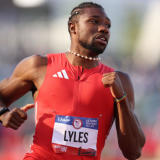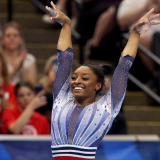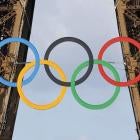The NBA is the premier basketball league in the world yet its rules are not universal. The Olympics, unlike the NBA, adhere to the rules of FIBA (International Basketball Federation). In fact, all professional basketball leagues except the NBA follow these rules and regulations.
So with Team USA heavily favored to once again take home the gold at the 2016 Summer Olympics in Rio De Janeiro, here's a primer on how Olympic basketball rules differ from the NBA.
The game is shorter
Out of the four major league sports, the NBA is the fastest out all of them. That being said, an Olympic basketball game is even faster.
Instead of the NBA's four 12-minute quarters, international games are split up into four 10-minute quarters. So a quick 40 minutes instead of 48 minutes. However, Olympic overtimes are the same as the NBA as they are also at five minutes.
One similar aspect relating to the game clock is that international play also has the same 24-second shot clock as the NBA.
Players only have five fouls
Unlike the NBA where players get disqualified after picking up six fouls or two technicals, only five fouls are allowed in international play. This includes technicals, which count against a player's five-foul limit. While having one less foul may seem like a big deal, remember, games are eight minutes shorter so it actually doesn't make that much of a difference.
Although there are less personal fouls in international play, just like the NBA, a team enters the bonus after the fifth team foul in a quarter.
The 3-point line is slightly closer
With shooters like Klay Thompson, Kyrie Irving, Kevin Durant and even Carmelo Anthony in the lineup, expect Team USA to feast from behind the arc in the Olympics, which is a bit closer to the basket compared to the NBA.
The international 3-point line is 22 feet, 1.75 inches at the top of the arc and 21 feet, 8 inches at the corners. Meanwhile, the NBA's arc is 23 feet, 9 inches at the top of the arc and 22 feet at the corners.
Teams have less timeouts
Teams have a plethora of timeouts to use during the course of a game in the NBA: six full timeouts, one 20-second timeout per half and three 60-second timeouts in overtime. This is a somewhat complex system which may be why the timeout situation in international play is much more streamlined.
For the Olympics, all timeouts are one-minute long and each team gets two timeouts in the first half, three in the second half and just one in overtime.
One other difference relating timeouts in international play is that only coaches can call them; players are not allowed to.
Basket interference is different
Don't be surprised if you see players smack the ball while it's above the rim during the Olympics with no penalty. That is perfectly legal, according to international rules. In international play, as soon as a shot is on an upward trajectory, a player is allowed to hit it.
This is of course much different than the NBA, where basket interference would be called in similar instances. However, NBA players have quickly adapted to this rule difference in international play as big men thrive at knocking would-be makes away or dunking it in when the ball is above the rim.
Expect to see some serious zone defense
College basketball purists, rejoice! All forms of zone defense are allowed in international play. Zone defense is allowed in the NBA, however players are still not allowed to just camp out in the paint due to the three-second rule.
Hopefully this primer has helped you better understand the small nuances that make the international game different from the NBA. All in all though, basketball in the Olympics is very similar and will resemble what you are used to seeing during the NBA season.
















